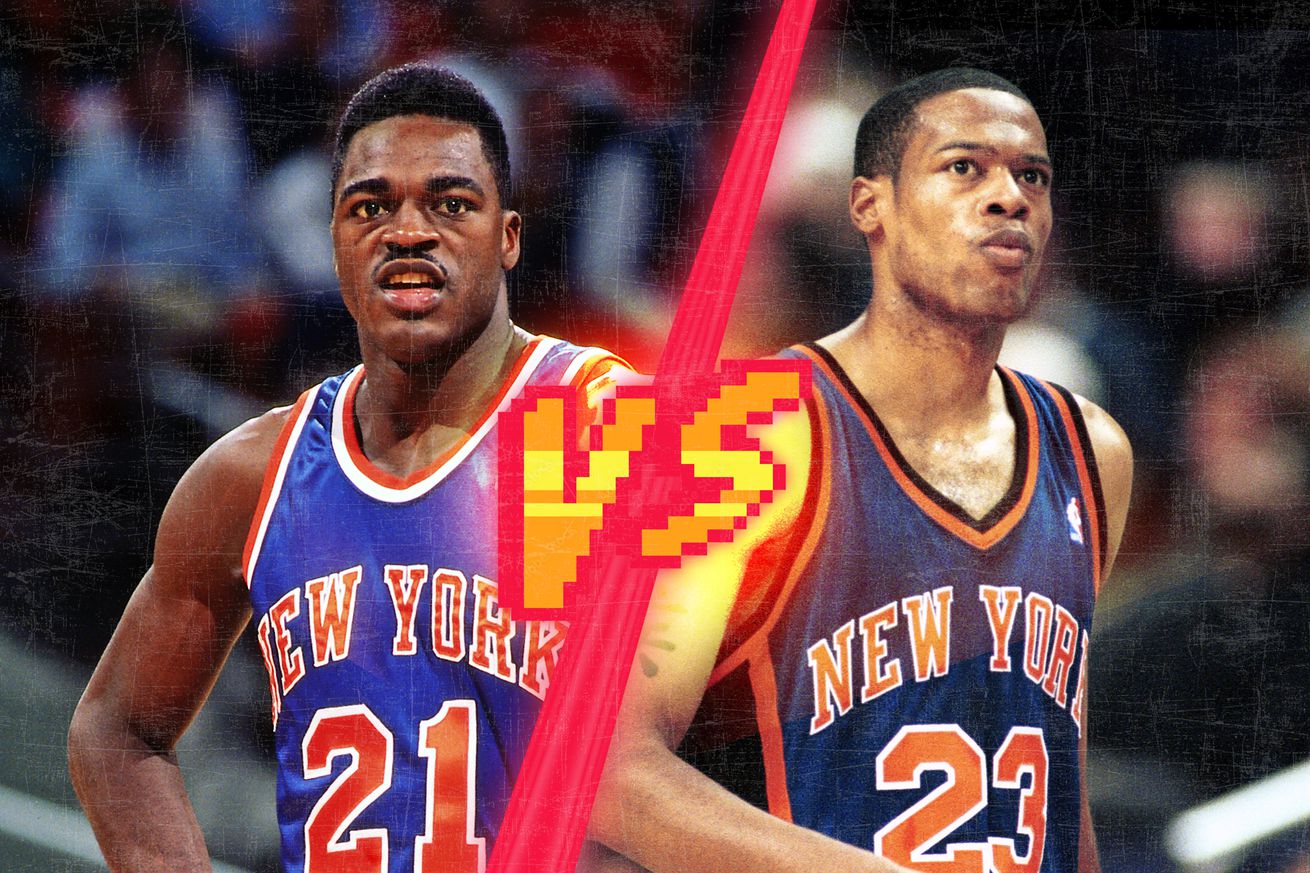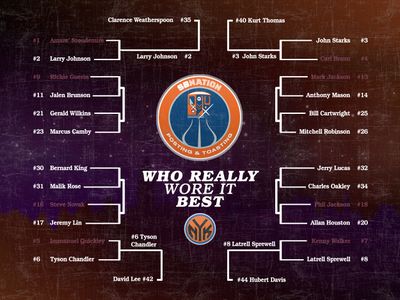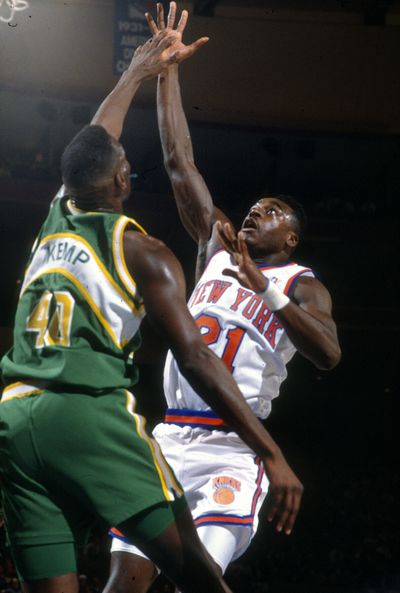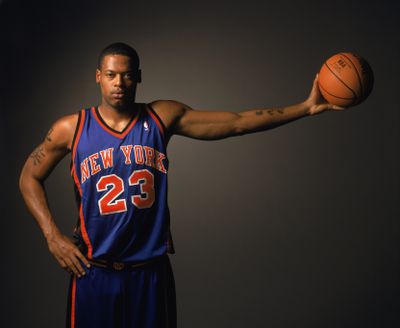
Doug E. Fresh vs. The Camby Man
After a two-month hiatus during the playoffs, our popular Who Wore It Best (WWIB) weekly segment is back. When we last left off, the most recent matchup in the WWIB Playoff Bracket featured Phil Jackson vs. Allan Houston. Unsurprisingly, Houston cruised to victory with 88% of the vote.
This week’s face-off features another seemingly one-sided battle: Gerald Wilkins vs. Marcus Camby. However, Wilkins has already pulled off one upset, edging out Charlie Ward in WWIB #21. Could he surprise us again?

Antonio Losada
#21 Gerald Wilkins — I was so confident Charlie Ward would take WWIB #21 that I even used his photo as the cover image for the segment back in January 2024. But in one of our closest matchups to date, Gerald Wilkins pulled off the upset, edging out Ward by just two votes out of 247 in a five-way showdown that also featured Iman Shumpert, Wilson Chandler, and Trevor Ariza.
The younger brother of NBA Hall of Famer Dominique Wilkins, Gerald Wilkins played for the Knicks from 1985 to 1992. Over seven seasons in New York, he averaged 14.9 points, 3.5 assists, and 3.2 rebounds per game. His best year came during his sophomore season, when he averaged just under 20 points per game and finished seventh in the 1986–87 NBA Most Improved Player voting.

Often serving as the team’s second scoring option behind Patrick Ewing, Wilkins maintained a consistent role in the rotation until the emergence of John Starks in 1990. By the time Xavier McDaniel joined the roster in 1992, it was clear Wilkins’ tenure with the Knicks was nearing its end. After the 1992 season, Wilkins signed with the Cleveland Cavaliers.
#23 Marcus Camby — If Charlie Ward wasn’t already wearing the #21 when Camby joined the Knicks, he most likely would’ve continue to wear the same number he wore as a Toronto Raptor and during his college years at UMass. Alas, the number 21 was in use when Camby joined the Knicks in 1998, and he elected to wear the #23.
To me, when I see an Orange and Blue #23, the first Knick to come to mind will probably always be Camby. Just as the #8 will always be Sprewell and the #3 will always be Starks, the same could be said for the #23 (for me at least).

Photo by Steven Freeman /NBAE via Getty Images
In 1998, the Knicks acquired in a draft day trade that sent their long-time enforcer Charles Oakley and the draft rights to Sean Marks to the Toronto Raptors. As the Knicks were looking to go younger as their core was starting to show their age, Camby checked all the boxes. At 6’11” with the quickness and agility of a small forward, he brought a different skill set to a role previously defined by Oakley’s brute strength and physicality. Aware of the challenge ahead, Camby addressed the trade with respect: “No one can replace Oak. He was the heart and soul and team leader. I play different positions. I bring versatility. We’ll take it one day at a time and focus on winning—that’s what I’m about.” And Camby backed up his words with action.
When Marcus Camby made his Knicks debut, NBA fans quickly took note of his transformation from his Toronto days. He had packed on 20 pounds of muscle, shedding his reputation as a wiry shot-blocker in favor of a more physically imposing frame. Just as noticeable were two new Chinese symbol tattoos on his right shoulder and bicep, a league first that helped spark a broader tattoo trend across the NBA.

During the first two years of his initial stint with the Knicks, Marcus Camby primarily played behind Patrick Ewing. But when Ewing suffered a season-ending Achilles injury during the 1999 playoffs, Camby stepped up in a major way. Teaming with Allan Houston and Latrell Sprewell, the trio formed a dynamic new core that energized the roster. Together, they made NBA history, leading the Knicks to become the first No. 8 seed ever to advance to the NBA Finals.